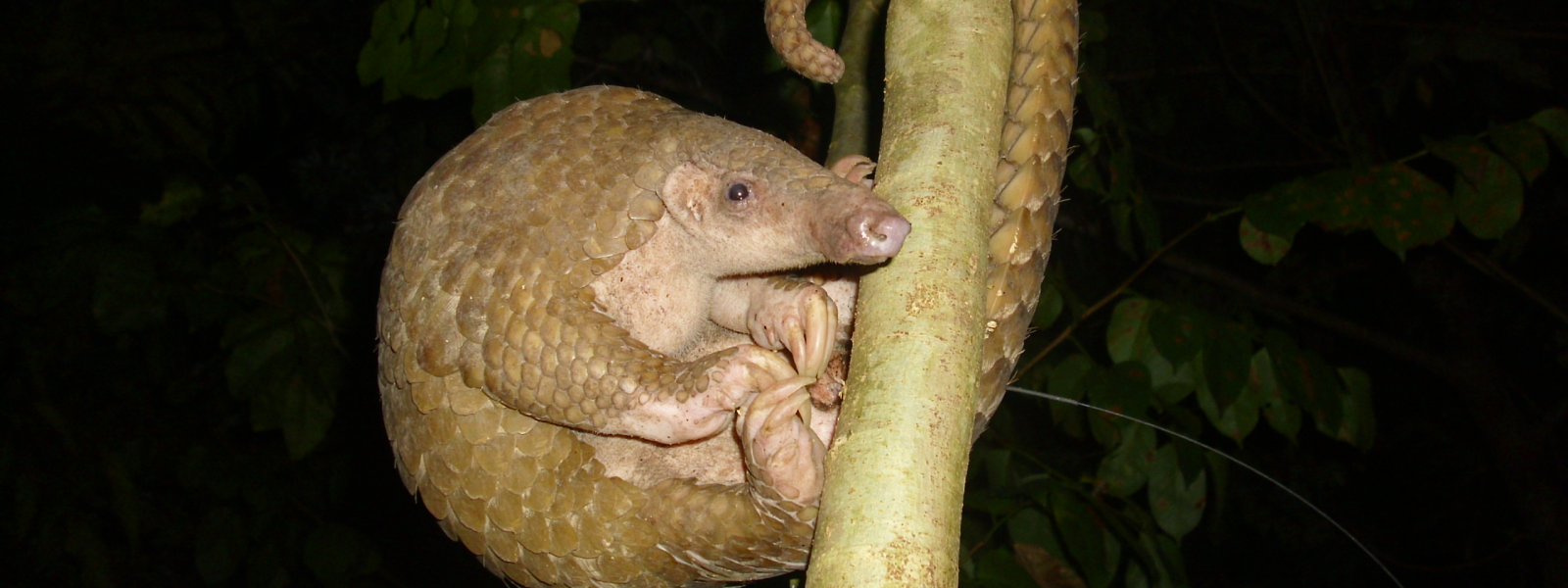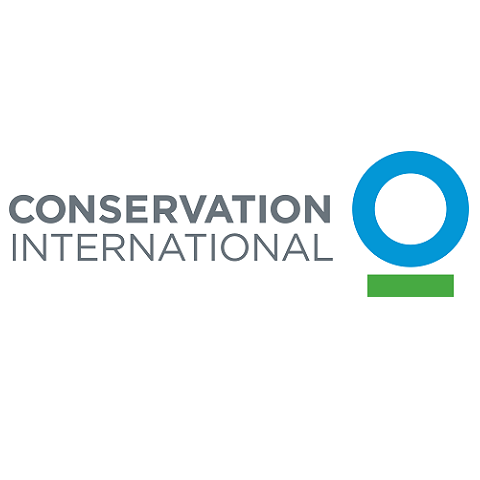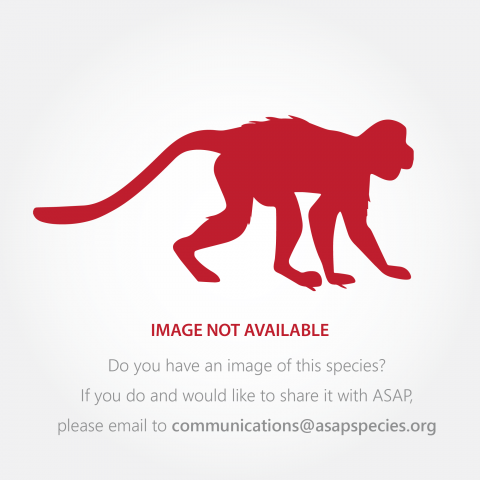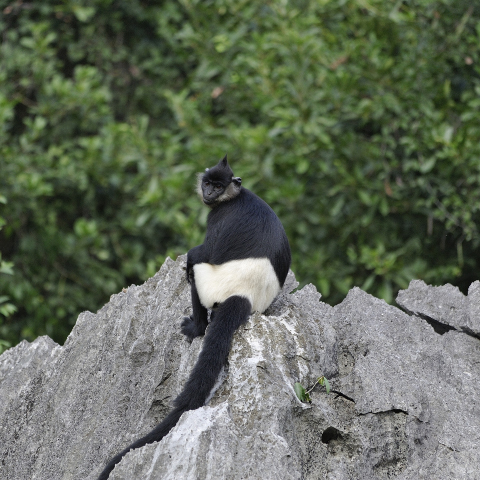Conservation Actions
The species is present in a number of protected areas, though it should be noted that the entirety of the Province of Palawan was declared a game refuge and bird sanctuary in 1969 (Proclamations 219 and 530-B). The species occurs in Mount Mantalingahan Protected Landscape, Omoi Cockatoo Reserve and Manambaling Cockatoo Reserve in Dumaran Island as well as in Calauit Safari Park, Malampaya Sound, and Puerto Princesa Underground River National Park. Similarly it occurs in Lower Ilian Ilian – Masaya 1 – Maharlika Protected Watershed, Dumarao in Roxas, and Little Baguio - Taliwara – Durian protected watershed, and Mendoza in Roxas.
The Philippine Pangolin is protected by the Philippine Republic Act 9147 known as the Wildlife Resources Conservation and Protection Act, which prohibits the collection of any form of wildlife without a permit. In the Province of Palawan, the Philippine Pangolin is classified as Critically Endangered, and in the remaining provinces of the Philippines it is classified as Endangered. Further research is needed into populations of this species and the magnitude and types of threats it faces.
Location Information
The Philippine Pangolin (Manis culionensis) is endemic to the Philippines, where it is restricted to the Province of Palawan, also known as the Palawan faunal region (Everett 1889, Bourns and Worcester 1894, Lawrence 1939, Heaney et al. 1998). It has historically been recorded in this region only, with occurrence records on mainland Palawan, the Calamian Islands, and several smaller surrounding islands (Everett 1889, Bourns and Worcester 1894, de Elera 1915, Lawrence, 1939) and Batas Island in Taytay (Schoppe et al. 2017, in prep. a, Acosta and Schoppe 2018). There are indications from Indigenous people and local communities that it may also occur on islands off of El Nido, including Lagen Island, Tagnipa, and Nagbilisong Islands in San Vincente (Acosta and Schoppe 2018). Additionally the species occurs on Apulit Island, which is apparently the result of an introduction, which may also explain its presence on Lagen Island (S. Schoppe, unpubl. data).
North of mainland Palawan the species is found on the Calamian Islands, including Culion Island (Hollister 1913, de Elera 1915, Corbet and Hill 1992, Heaney et al. 1998), Calauit Island (Alviolla III 1998), and Busuanga Island (Hoogstraal 1951). Interview surveys conducted in 2006 with local people indicate that the species occurs in 25 localities on 12 islands dispersed across the islands of Calauit, Busuanga, and Culion, and at least nine smaller islands from the Calamian group of islands (Rico and Oliver 2006). Interviewees (Rico and Oliver 2006, Paguntalan et al. 2010, 2012, 2015) and also Indigenous peoples from Coron Island (Acosta and Schoppe 2018) suggest that the Philippine Pangolin is absent from Coron Island, but did confirm its presence in the Municipality of Coron on the Island of Busuanga.
It is uncertain whether the species occurs on Balabac Island, south of mainland Palawan. Steere (1888) reported the absence of pangolins on the island and the remaining literature provides no evidence of its presence there. Indigenous peoples from southern Palawan have also refuted its presence on Balabac in 2018 (Acosta and Schoppe 2018). In contrast, interviews on illegal trade in pangolins conducted in 2008 with a hunter from the Palaw´an tribe and local people, both from Balabac Island suggested that the species may occur in very low numbers on Balabac Island (Schoppe and Cruz 2008).
Geographic Range
Extant
Philippines
Population Information
There is limited knowledge of Philippine Pangolin populations. This species is infrequently observed, partly due to its increasing rarity, but also because of its elusive, solitary, and nocturnal habits, and there is a lack of research on population densities or abundance.
The species is heavily hunted, and it is suspected that populations are declining (Esselstyn et al. 2004, Schoppe and Cruz 2009; Bayron 2014, Schoppe et al. 2017; in prep. a). Interview-based research with various respondent groups supports suspected population reduction. On Palawan Island and the Calamian Islands, interviews with local community members suggest that the species was formerly relatively common, but since the turn of the century (i.e. from 2000) it has become very rare (Rico and Oliver 2006, Schoppe and Cruz 2009, Lagrada 2012). Interviews with Indigenous peoples groups from Tagbanua, Batak, and Palaw’an Tribes, and Cuyunon communities from the Calamian Islands and Palawan Island revealed similar results. Despite some difficulties in quantifying remaining wild populations, these groups estimated population declines between 1980 and 2018 to be around 85% in the south and 95% in the north of Palawan (Acosta and Schoppe 2018). Local hunters also reported lower catch per unit effort compared to the past, for example one hunter in southern Palawan reported catching 3-4 pangolins a week in 1992, compared to just one per month in 2012 (Lagrada 2012, Bayron 2014).
Early literature suggests that the Philippine pangolin is naturally rare (Rabor 1965, Heaney et al. 1998). In 1965 the species was described as uncommon, and population reduction was attributed to the clearing of forests, although hunting was also acknowledged (Rabor 1965). In 1998, Heaney et al. (1998) noted that the species was uncommon and heavily hunted.
It has been noted that the species is not distributed evenly across its range (Heaney et al. 1998). Interview-based research and density estimations have demonstrated that the species is found in higher densities in northern compared to southern Palawan (Schoppe and Cruz 2009, Lagrada 2012, Schoppe and Alvarado 2015a, b, Schoppe et al. 2017; in prep. a). Additionally, surveys have indicated that the Philippine Pangolin is found in higher densities on islands compared to mainland Palawan (Schoppe et al. 2017; in prep. a).
Population density estimates are available from a survey of six sites representing northeastern islands, Central Palawan, and Southern Palawan (Schoppe et al. 2017; in prep. a). This study estimated a mean density of adults of 2.5±1.4 adults/km² across all the sites. Population density on the islands in northeastern Palawan was estimated at 3.8±0.35 adults/km² with lower estimates in central and southern sites (1.8±1.61 adult/km² and two adult/km²) respectively. A survey on Brookes Point in southern Palawan estimated a much lower density of 0.05 pangolins/km², but this discrepancy is likely due to the different survey method used (Lagrada 2012). There are currently no other comparable densities available for this species.
Threats
The principle threat to the Philippine Pangolin is overexploitation from hunting and poaching, while habitat loss also poses a threat (Schoppe and Cruz 2009, Lagrada 2012). These threats are compounded by the species' restricted range (Schoppe et al. in prep a).
The Philippine Pangolin was historically hunted at a local level for meat and traditional uses, and for trade at a domestic level (i.e. within the Philippines) which included its blood, meat, skins, and scales (Esselstyn et al. 2004, Cruz et al. 2007, Schoppe and Cruz 2009). International trade (whole animal, meat, scales and skin) was rare in 2008 (Schoppe and Cruz 2009) and appeared to have declined following heavy exploitation of the species during the 1970s-1990s for international trade in skins. During the 1970s-1990s, the species had not been recognised as distinct from the Sunda Pangolin, and was traded under CITES as the Sunda Pangolin (see Challender et al. 2015). Heaney et al. (1998) stated that the species was heavily hunted, and probably threatened, whilst Esselstyn et al. (2004) reported that hunting pressure was moderate. Hunters stated that pangolins used to be very common in Palawan; and they reported catching greater numbers in the past, and that hunting for trade and subsistence seem to be the main reasons for its decline (Schoppe and Cruz 2009). Poaching is reported to be particularly high in northern Palawan, where it is suspected there is a higher density of the species (Bayron 2014).
At the local level, hunting has been reported to be common in southern Palawan (van den Beukel et al. 2008, KFI 2008). A 2009 study indicated that the majority of pangolin hunting was for subsistence purposes (Schoppe and Cruz 2009). However, a later study indicated that the majority of pangolin hunting was for trade, i.e. no longer for local use (Bayron, 2014). This shift from subsistence to market economies has been noted among members of the Tagbanua and other ethnic groups, and is a significant threat to the species (Esselstyn et al. 2004, Lacerna and Widmann 2008).
Hunting for national trade (i.e. with the Philippines) has been known to occur since the 1980s (Schoppe and Cruz 2009). The Philippine Pangolin is poached for the food and traditional medicine markets within Palawan and in major cities in the Philippines including Manila (Schoppe and Alvarado 2015, TRAFFIC 2018). Recent evidence also demonstrates there is an increasing illicit international trade involving the species, the full extent of which is unknown (Cruz et al. 2007, Schoppe and Cruz 2009, Pantel and Anak 2010, Challender et al. 2015, Challender and Waterman 2017). Despite national legislation, Asian pangolins are persistently hunted for the illegal international trade, largely to supply demand in China and Vietnam for meat and scales used in traditional medicines (Challender and Waterman 2017, Heinrich et al. 2017). As pangolin populations have been severely depleted in China (Zhang 2009), the bulk of demand for pangolin products is now met with pangolins from elsewhere in Asia, placing a more intensive hunting pressure on all Asian pangolin species, as well as the African species (Challender and Waterman 2017, Heinrich et al. 2017).
The numbers of pangolins involved in national and international trafficking are unknown (Schoppe and Cruz 2009). A study analysing seizure data between 2001-2017 found a total of 39 seizure incidents within this period, involving an estimate 667 individuals, and implicating the Philippines as either a source country or place of seizure (Gomez and Sy 2018). This study found that seizures in the Philippines increased after 2010, peaking in 2012 and 2014, whilst the volume of pangolins seized increased from 2010 onwards (Gomez and Sy 2018); 52% of these seizures consisted of meat and scales, 27% dead whole individuals, 16% individuals (dead or alive), and 5% live animals (Gomez and Sy 2018). Actual volume of trade are likely higher; Challender et al. (2019) reported that trade in Asian pangolins involved more than an estimated 300,000 Asian pangolins between 2001 and 2018. According to poachers in the south of Palawan, the demand for pangolins has increased, presumably due to increasing demand from China (KFI 2008). Between 2006-2013 an increase in price and a shift from meat/live animals to scales was noticeable from 2006-2013 (S. Schoppe, unpubl. data). The observed increase in the number of confiscations and number of confiscated animals indicates either an increase in demand and/or trade or improved law enforcement (KFI 2013).
Partners
IUCN Red List Account Link
Please click here to see the species' IUCN Red List Account page.Photo Credits
Katala Foundation, Inc.






